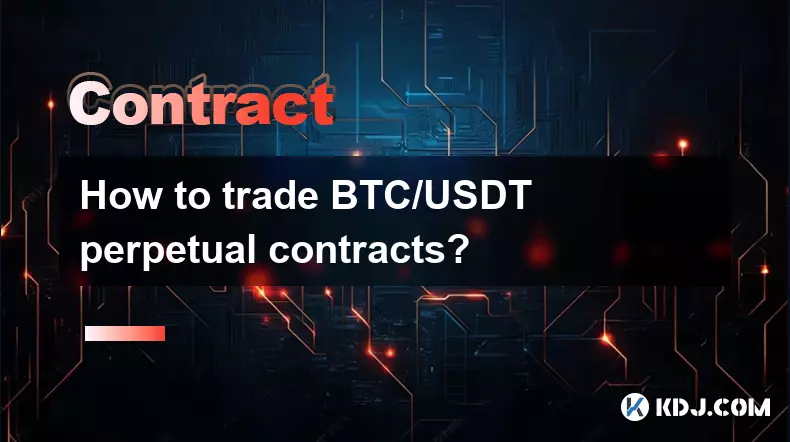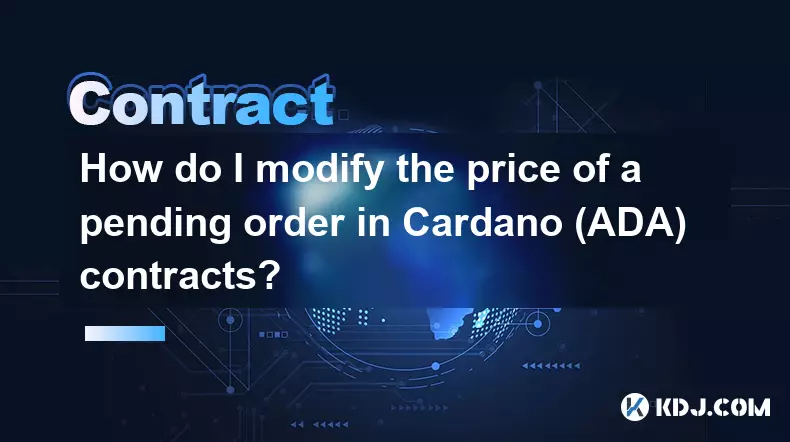-
 bitcoin
bitcoin $109667.069529 USD
-3.03% -
 ethereum
ethereum $3936.685804 USD
-4.07% -
 tether
tether $1.000493 USD
0.01% -
 xrp
xrp $2.771823 USD
-4.74% -
 bnb
bnb $957.805027 USD
-5.34% -
 solana
solana $196.735100 USD
-6.68% -
 usd-coin
usd-coin $0.999727 USD
-0.01% -
 dogecoin
dogecoin $0.227355 USD
-5.12% -
 tron
tron $0.335205 USD
-0.81% -
 cardano
cardano $0.779256 USD
-3.59% -
 ethena-usde
ethena-usde $0.999900 USD
-0.06% -
 hyperliquid
hyperliquid $42.492095 USD
-6.61% -
 chainlink
chainlink $20.501853 USD
-4.34% -
 avalanche
avalanche $28.952606 USD
-11.21% -
 stellar
stellar $0.356038 USD
-3.93%
How to trade BTC/USDT perpetual contracts?
BTC/USDT perpetual contracts allow leveraged speculation on Bitcoin's price without expiry, using USDT for stability and funding rates to align with spot prices.
Sep 13, 2025 at 07:00 am

Understanding BTC/USDT Perpetual Contracts
1. BTC/USDT perpetual contracts are derivative financial instruments that allow traders to speculate on the price of Bitcoin against the Tether stablecoin without owning the underlying asset. These contracts do not have an expiration date, which differentiates them from traditional futures.
2. The contract value is denominated in USDT, providing price stability relative to fiat currencies. Traders can go long if they expect the price of Bitcoin to rise or short if they anticipate a decline.
3. Funding rates are a core mechanism in perpetual contracts. They are periodic payments exchanged between long and short positions to keep the contract price aligned with the spot market. When the funding rate is positive, longs pay shorts; when negative, shorts pay longs.
4. Exchanges such as Binance, Bybit, and OKX offer deep liquidity for BTC/USDT perpetuals, enabling high-volume trading with tight spreads. Each platform implements its own funding rate calculation and settlement intervals, typically every 8 hours.
5. Mark price is used to prevent price manipulation and unfair liquidations. It is derived from the average of major spot exchanges and is separate from the last traded price on the futures market.
Risk Management Strategies
1. Leverage amplifies both gains and losses. While exchanges offer leverage up to 100x, using high leverage increases the risk of liquidation. Conservative traders often use 5x to 10x to maintain position stability during volatility.
2. Setting stop-loss and take-profit orders is essential. These tools automatically close positions at predetermined levels, protecting capital from sudden market swings.
3. Position size should be calculated based on account equity and risk tolerance. A common rule is not to risk more than 1% to 2% of the total balance on a single trade.
4. Monitoring open interest and funding rates helps gauge market sentiment. Unusually high funding rates may indicate over-leveraged long positions, signaling a potential correction.
5. Never leave a leveraged position unattended during high-impact news events such as macroeconomic data releases or regulatory announcements.
Executing a Trade
1. Choose a reputable exchange with strong security, regulatory compliance, and reliable infrastructure. Verify withdrawal history and user reviews before depositing funds.
2. Deposit USDT into your futures wallet. Ensure the network selected matches the exchange’s supported blockchain to avoid loss of funds.
3. Navigate to the BTC/USDT perpetual market and select the order type: limit, market, or conditional. Market orders execute immediately at the best available price, while limit orders wait for a specified price level.
4. Set leverage before opening a position. Adjusting leverage after entry is possible on most platforms but affects margin requirements and liquidation price.
5. Always confirm the direction of your trade—long or short—and double-check order size and leverage before submission.
Monitoring and Closing Positions
1. Track your unrealized P&L in real time. Sudden price movements can rapidly change the value of open positions, especially under high leverage.
2. Watch the liquidation price displayed by the exchange. If the mark price approaches this level, consider reducing position size or adding margin to avoid forced closure.
3. Partial profit-taking allows locking in gains while letting the remainder of the position run. This strategy balances risk and reward without exiting entirely.
4. Use trailing stop orders to protect profits during strong trends. These automatically adjust the stop-loss level as the market moves favorably.
5. Close the position manually or via preset orders when your trading plan criteria are met. Emotional decisions often lead to reduced profitability or increased losses.
Frequently Asked Questions
What is the difference between isolated and cross margin?Isolated margin allocates a fixed amount of collateral to a specific position. If the position is liquidated, only that margin is lost. Cross margin uses the entire wallet balance as collateral, reducing liquidation risk but exposing more funds to potential loss.
How often are funding rates charged?Funding rates are typically settled every 8 hours on major exchanges. Traders are charged or paid based on their position direction and the prevailing rate at each interval.
Can I trade BTC/USDT perpetuals with a small account?Yes, but caution is required. Small accounts are more vulnerable to liquidation due to limited buffer against volatility. Using low leverage and precise position sizing is critical for sustainability.
What happens during liquidation?When the mark price reaches the liquidation price, the exchange automatically closes the position to prevent further losses. A liquidation fee is usually charged, and remaining margin may be partially or fully lost depending on market conditions.
Disclaimer:info@kdj.com
The information provided is not trading advice. kdj.com does not assume any responsibility for any investments made based on the information provided in this article. Cryptocurrencies are highly volatile and it is highly recommended that you invest with caution after thorough research!
If you believe that the content used on this website infringes your copyright, please contact us immediately (info@kdj.com) and we will delete it promptly.
- Coin War, Durian Auction, Night Tour: A Wild Ride Through Crypto, Cuisine, and Korean TV
- 2025-09-27 08:45:14
- Cyber Hornet, ETFs, and Crypto: A New York Minute on Hybrid Investments
- 2025-09-27 08:25:12
- Bitcoin's Future Value: Prediction, Trends, and Insights
- 2025-09-27 08:45:14
- MoonBull: The Meme Market's 100x Crypto Contender?
- 2025-09-27 08:25:12
- Eric Trump, Crypto Market, and the Unbelievable Q4: A New York Take
- 2025-09-27 08:30:01
- Linea Crypto & SWIFT: What's the Price Prediction?
- 2025-09-27 08:50:01
Related knowledge

How do I enable the "scalping-only" mode for Cardano (ADA) contracts?
Sep 24,2025 at 03:19am
Understanding Scalping Strategies in Crypto Derivatives1. Scalping in cryptocurrency trading refers to executing multiple short-term trades within min...

What is the maximum position limit for Cardano (ADA) contracts?
Sep 23,2025 at 11:00pm
Understanding ADA Futures and Derivatives Market Structure1. Cardano (ADA) futures contracts are offered by several major cryptocurrency derivatives e...

What is the maker fee for Cardano (ADA) contracts?
Sep 26,2025 at 09:01am
Understanding Maker Fees in Cardano (ADA) Contracts1. The concept of maker fees applies broadly across decentralized exchanges and smart contract plat...

How can I view open interest in Cardano (ADA) contracts?
Sep 24,2025 at 07:36am
Understanding Open Interest in Cardano Derivatives1. Open interest refers to the total number of outstanding derivative contracts, such as futures or ...

How do I modify the price of a pending order in Cardano (ADA) contracts?
Sep 27,2025 at 01:00am
Understanding Pending Orders in Cardano Smart Contracts1. Cardano operates on a proof-of-stake blockchain that supports smart contracts through its Pl...

What is the function of the insurance fund in Cardano (ADA) contracts?
Sep 24,2025 at 02:18am
Understanding the Role of Insurance Funds in Cardano Smart Contracts1. The insurance fund within Cardano's ecosystem is not a native feature directly ...

How do I enable the "scalping-only" mode for Cardano (ADA) contracts?
Sep 24,2025 at 03:19am
Understanding Scalping Strategies in Crypto Derivatives1. Scalping in cryptocurrency trading refers to executing multiple short-term trades within min...

What is the maximum position limit for Cardano (ADA) contracts?
Sep 23,2025 at 11:00pm
Understanding ADA Futures and Derivatives Market Structure1. Cardano (ADA) futures contracts are offered by several major cryptocurrency derivatives e...

What is the maker fee for Cardano (ADA) contracts?
Sep 26,2025 at 09:01am
Understanding Maker Fees in Cardano (ADA) Contracts1. The concept of maker fees applies broadly across decentralized exchanges and smart contract plat...

How can I view open interest in Cardano (ADA) contracts?
Sep 24,2025 at 07:36am
Understanding Open Interest in Cardano Derivatives1. Open interest refers to the total number of outstanding derivative contracts, such as futures or ...

How do I modify the price of a pending order in Cardano (ADA) contracts?
Sep 27,2025 at 01:00am
Understanding Pending Orders in Cardano Smart Contracts1. Cardano operates on a proof-of-stake blockchain that supports smart contracts through its Pl...

What is the function of the insurance fund in Cardano (ADA) contracts?
Sep 24,2025 at 02:18am
Understanding the Role of Insurance Funds in Cardano Smart Contracts1. The insurance fund within Cardano's ecosystem is not a native feature directly ...
See all articles










































































